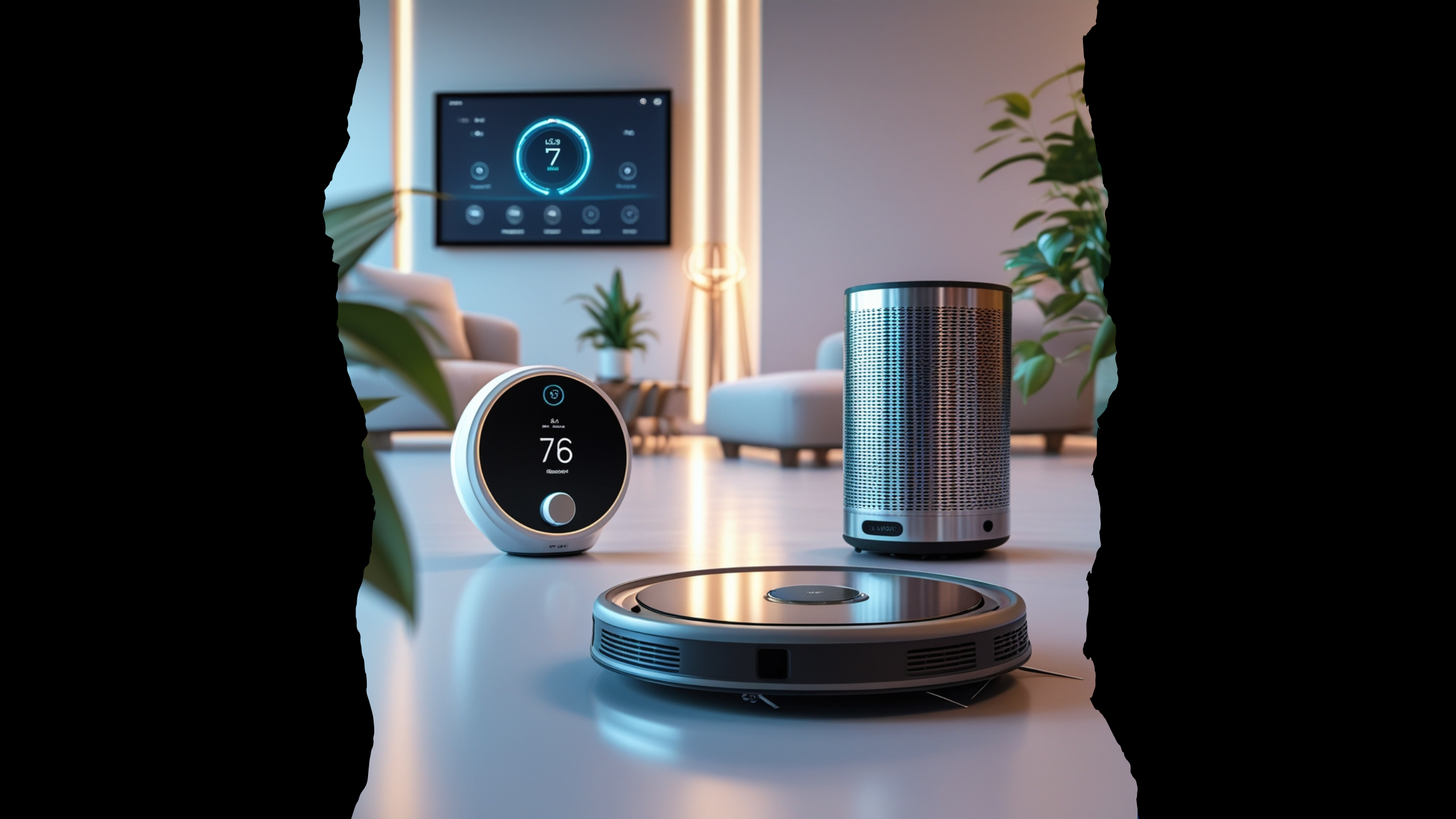Just Tech Me At
Smart Home Gadgets for the Aging Population:
Enhancing Comfort, Safety, and Independence
January 19, 2025
by Just Tech Me At
*As an Amazon Associate, I earn from qualifying purchases.*


.svg.png)


*As an Amazon Associate, I earn from qualifying purchases.*
Follow us on social media for
freebies and new article releases.
Table of Content
Aging within an existing place and space ("Aging in Place") is becoming an increasingly popular choice for many older adults. The idea of remaining in the comfort of one's own home, surrounded by familiar memories and cherished routines, holds undeniable appeal. However, as we age, certain challenges can arise that may make living independently more difficult. Fortunately, advancements in smart home technology have introduced innovative gadgets specifically designed to help aging adults and their families achieve peace of mind, all while enhancing safety, comfort, and independence. One standout category of these technologies is smart home monitoring systems. These discreet, high-tech systems not only ensure the safety of aging individuals but also foster connections with loved ones and caregivers. Let's dive into how smart home monitoring systems, alongside other gadgets, are revolutionizing the way we age in place.
Understanding the Challenge of "Aging in Place"
Before discussing solutions, it's important to understand the specific challenges faced by older adults who wish to age in place. These might include:
Smart Home Monitoring Systems for Peace of Mind
At the heart of any aging-in-place strategy are smart home monitoring systems. These systems serve as a digital safety net, empowering both seniors and their support networks to feel secure. Here's how they work:
Other Smart Gadgets Supporting Aging in Place
While monitoring systems are exceptional, aging in place isn't just about safety-it's about maintaining independence and improving quality of life. Below are some of the best smart gadgets currently on the market to complement monitoring systems.
- Automatically turn on when motion is detected.
- Adjust brightness based on the time of day or ambient light levels.
- Be controlled remotely via an app or voice command. This level of automation minimizes the risk of fumbling for light switches, especially during the night.
-Turn on lights or appliances
-Play music or audiobooks.
-Set reminders for appointments or medication.
-Make phone calls or send messages.
The intuitive nature of these assistants ensures they're accessible even for those unfamiliar with other smart technologies.
The Human Component: Peace of Mind for Caregivers
Smart home gadgets do more than just enhance independence for aging adults-they also provide peace of mind for family members and caregivers. Knowing that their loved ones are safe enables caregivers to focus on their responsibilities without constant worry or the need for daily physical check-ins. Many smart monitoring systems now include mobile applications that provide real-time updates, making caregiving more manageable even at a distance. This connection is invaluable, especially for caregivers who may live far away or have full-time jobs. It allows issues to be addressed before they escalate into emergencies, strengthening the sense of security for all parties involved.
Challenges and Considerations
While the benefits of a smart home ecosystem are clear, certain challenges should be considered. Aging individuals may have varying levels of comfort or familiarity with technology, creating a potential learning curve. Simplifying the setup process, offering training, and starting with intuitive gadgets can ease this transition. Another important factor is privacy. Monitoring systems inherently collect data about movement, habits, and behaviors. It's crucial to use systems that respect and protect this sensitive information. Read privacy policies before purchasing any smart device, and ensure strong security measures (like password protection and encrypted connections) are in place.
Conclusion
The dream of aging in place is no longer a distant ideal-it's a very achievable reality enabled by modern smart home gadgets. By incorporating thoughtful tools like home monitoring systems, voice assistants, and automated safety devices, older adults can maintain a secure and independent lifestyle on their own terms. Family members and caregivers also benefit greatly from the assurance provided by these technologies, knowing they can stay informed and take quick action when needed. With the right combination of gadgets, aging in place can feel less like a challenge and more like an opportunity to embrace comfort, dignity, and peace of mind. The best part? Smart technology is evolving rapidly. As new devices and features continue to emerge, aging in place will only become safer, simpler, and more accessible for generations to come.
Listing:
Device Overviews & Product Reviews

Shop Amazon for Smart Home Devices
Frequently Asked Questions (FAQ)
Q: How can smart home devices assist aging individuals in their daily lives?
A: Smart home devices can provide convenience, safety, and independence for aging individuals. Features like voice-activated assistants, automated lighting, and smart thermostats make daily tasks easier, while devices like smart doorbells and fall detection systems enhance security and health monitoring.
Q: What are the main safety benefits of smart home technology for older adults?
A: Smart home technology can help prevent accidents and provide peace of mind. Devices like motion sensors, emergency alert systems, and automated lighting reduce the risk of falls, while remote monitoring allows caregivers to check in on loved ones in real time.
Q: Are smart home systems easy for older adults to use?
A: Many smart home devices are designed with user-friendly interfaces and voice control, making them accessible for older adults. Customizable settings and simple app controls ensure that even those with limited technical experience can easily operate them.
Q: How do smart home devices support health and wellness for the aging population?
A: Smart devices like medication reminders, fitness trackers, and connected health monitors help aging individuals maintain their health. Additionally, telehealth systems and video calling devices make it easier to connect with healthcare providers and family members.
Q: What options are available for caregivers to use smart home technology for remote assistance?
A: Caregivers can use remote monitoring systems to track activity levels, receive alerts for emergencies, and manage household devices from a distance. Smart cameras, sensors, and voice assistants allow caregivers to provide support without being physically present.
Q: Can smart home devices help aging individuals save money?
A: Yes, smart home devices like programmable thermostats and energy-efficient appliances can help reduce energy costs. By automating energy usage and monitoring consumption, older adults can manage their expenses more effectively.
